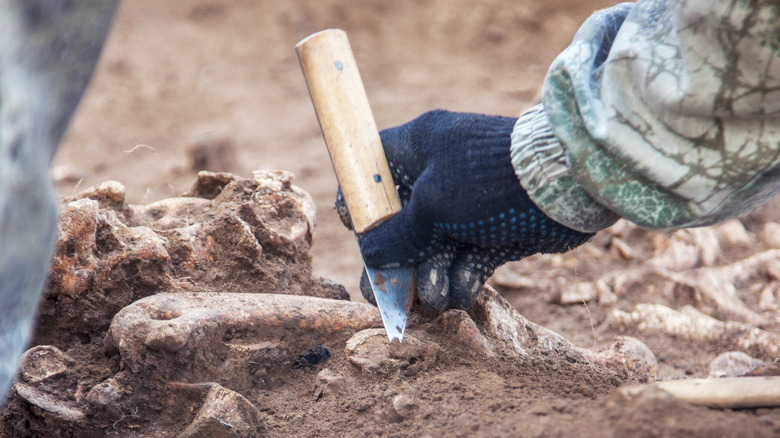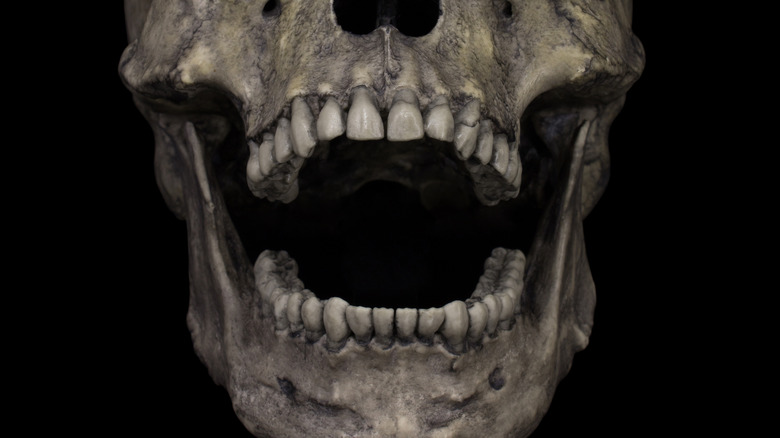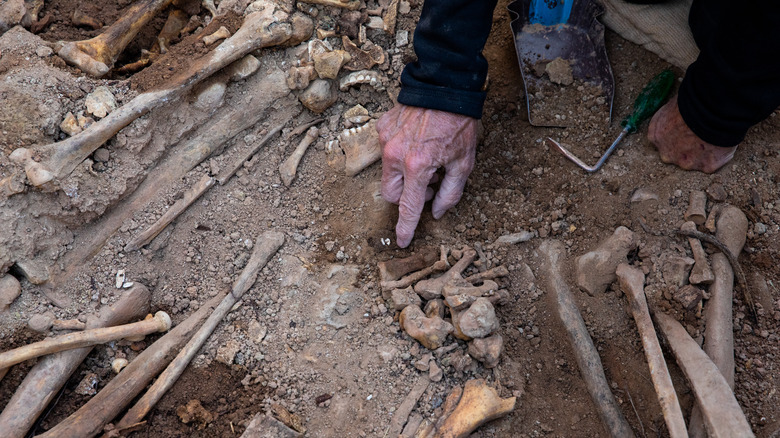What A 1.4 Million-Year-Old Jawbone Tells Us About Early Humans
The kingdom of nature holds secrets and archaic wonders hidden in its deepest recesses that humans have painstakingly sought to uncover for ages. Archaeologists exhume heirlooms of the animal kingdom that date back millions and millions of years — heirlooms that can reveal parts of Earth's timeless story and that of the beings that have inhabited it for generations. Of course, when we say "heirlooms," we mean fossils. "For me, archaeology is not a source of illustrations for written texts, but an independent source of historical information, with no less value and importance, sometimes more importance, (than) the written sources," Russian historian Michael I. Rostovtzeff once said (via Good Reads).
Human beings, as we know, are just as much a part of that history as any other creature that has ever walked, flown, or swam among the elements on planet Earth. Our story runs deep into the annals of organic history, and each day, we learn more and more about ourselves and the conditions that molded what we've presently become. According to NBC News, scientists have just uncovered a certain object that might divulge some astonishing truths about human beings and the story of our evolution, and it usurps a lot of things we previously believed to be facts. Of course, the replacement of old information for new information is indicative of avid discourse in the realm of science, and its coming always fascinates and confounds us equally.
The 1.4 million-year-old jawbone
"The fossil, a piece of jawbone belonging to an ancient ancestor of homo sapiens and possibly the oldest archaic human fossil found in Europe, was found in the Atapuerca Mountains in northern Spain on June 30," an NBC News piece read shortly after the discovery. Archaeologists at the excavation site managed to link the bone fragment of a jawbone back to those first hominids who entered present-day Europe some 1.4 million years ago. A similar discovery was made in 1997 in the same region, when the remains of homo antecessor ("pioneer man") were found — remains that were estimated to be around 850,000 years old. Ten years later, another discovery was made. A piece of a jawbone like the one found this year was uncovered in 2007. That one was believed to be about 1.2 million years old (per NBC News).
The 2007 discovery was, up until June 30, the oldest fossil on record that we could connect to early hominids, according to Live Science. However, when Édgar Téllez (a student at the National Center for Research on Human Evolution in Burgos) happened upon yet another piece of a hominid jawbone, searchers were pleasantly shocked. Téllez was part of an excavation team that was exploring the region in Spain that had previously harbored some remarkable fossilized antiquities, though the group of archaeologists had no idea that they would come across something else that could be attributed to early humans while sifting through the dirt.
What the discovery tells us about humans
In the wake of the discovery, scientists can now confirm that primitive humans were inhabiting modern-day Europe earlier than we thought. The homo antecessor jawbone found in 2007 suggested that our ancestors were traversing the area some 1.2 million years ago, but the one discovered on June 30 now tells us that it was actually 1.4 million years ago. This may seem like a subtle nuance, but it actually says a lot about our history and the evolution of the human species. "This is tied to a site with evidence of behavior. And every piece that we have that's tied to a site with evidence of behavior, such as making stone tools or hunting, tells us the behavioral capacities of ancestors and relatives of ours. For me, that's the important part," said anthropologist John Hawks in an interview with Live Science.
Obviously, those early hominids who were hunting, gathering, and occupying the land 1.4 million years ago looked a lot different from modern human beings. The jawbone fragment discovered by Téllez is a pivotal element in revealing how the human face evolved over a series of millennia, which has actually been a hot topic of debate among scientists, according to NBC News. Ideally, the newly exhumed piece of evidence will shed some light on the truth of the matter and corral experts into a closer territory of agreement.


